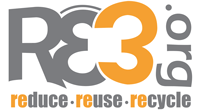Guest Blogger - Megan
Now it’s time for the final two steps: creating a pilot project and evaluating your strategies. It’s best to test your project on a smaller scale first, instead of jumping into it head first. That way you can see what works, what doesn’t and what you need to change before you launch a full-scale project. Because of this, piloting a project can save you lots of time, money and resources. Piloting a program can also help you show prospective sponsors how successful your program can be on a larger scale.
When you create a pilot project, make sure to incorporate the previous social marketing steps covered, like identifying barriers and using different strategies such as prompts, incentives and communication tools. For example, you can present these strategies or other ideas to a focus group to gauge how the public might react to your project. One great example of a successful pilot project took place in Abington Township, PA. The township took bits and pieces from other incentive programs to fit the needs of its own community and then piloted the project to see if it would work.
The final social marketing step according to Fostering Sustainable Behavior is evaluating your strategy. If your pilot project was successful, you can then proceed in launching it community-wide. However, it is important to keep your project up-to-date and track its progress over time in case something needs to be changed or adjusted. You can do this via surveys, focus groups or interviews with community members. These practices can also help you evaluate your program. You can combine these practices with physical data, such as recycling tonnage, website hits, etc., to statistically determine how effective your program is. It is best to take baseline data before starting the program and then periodically take data to compare to the pre-program values.

No comments:
Post a Comment